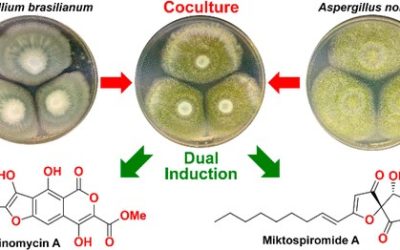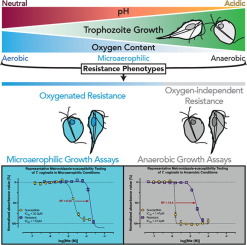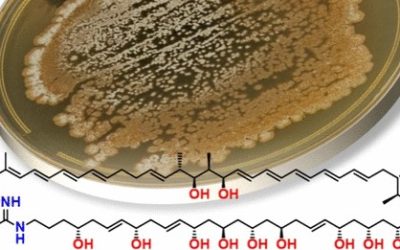Mahmud T. Morshed, Daniel Vuong, Andrew Crombie, Alastair E. Lacey, Peter Karuso, Ernest Laceyab and Andrew M. Piggott
Org. Biomol. Chem., 2018, 16, 3038-3051.
Publication Date: April 4, 2018
https://doi.org/10.1039/C8OB00545A
Abstract:
Reinvestigating antibiotic scaffolds that were identified during the Golden Age of antibiotic discovery, but have long since been “forgotten”, has proven to be an effective strategy for delivering next-generation antibiotics capable of combatting multidrug-resistant superbugs. In this study, we have revisited the trichloro-substituted depsidone, nidulin, as a selective and unexploited antibiotic lead produced by the fungus Aspergillus unguis. Manipulation of halide ion concentration proved to be a powerful tool for modulating secondary metabolite production and triggering quiescent pathways in A. unguis. Supplementation of the culture media with chloride resulted in a shift in co-metabolite profile to dichlorounguinols and nornidulin at the expense of the non-chlorinated parent, unguinol. Surprisingly, only marginal enhancement of nidulin was observed, suggesting O-methylation may be rate-limiting. Similarly, supplementation of the media with bromide led to the production of the corresponding bromo-analogues, but also resulted in a novel family of depsides, the unguidepsides. Unexpectedly, depletion of chloride from the media halted the biosynthesis of the non-chlorinated parent compound, unguinol, and redirected biosynthesis to a novel family of ring-opened analogues, the unguinolic acids. Supplementation of the media with a range of unnatural salicylic acids failed to yield the corresponding nidulin analogues, suggesting the compounds may be biosynthesised by a single polyketide synthase. In total, 12 new and 11 previously reported nidulin analogues were isolated, characterised and assayed for in vitro activity against a panel of bacteria, fungi and mammalian cells, providing a comprehensive structure–activity profile for the nidulin scaffold.


